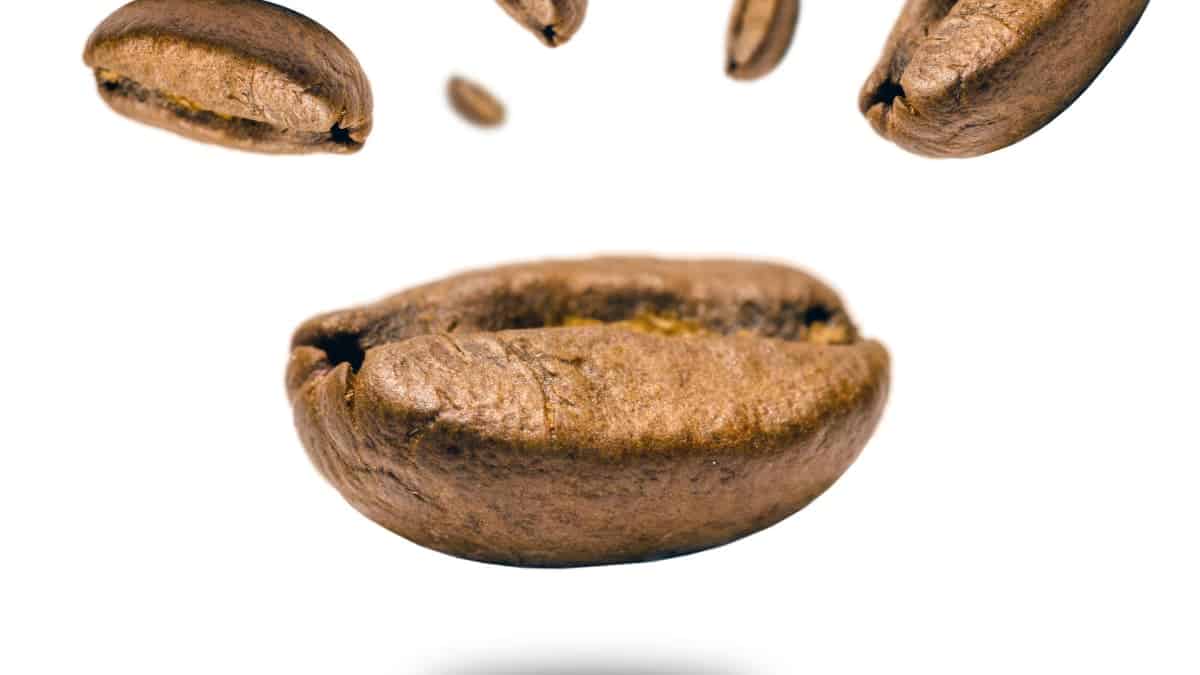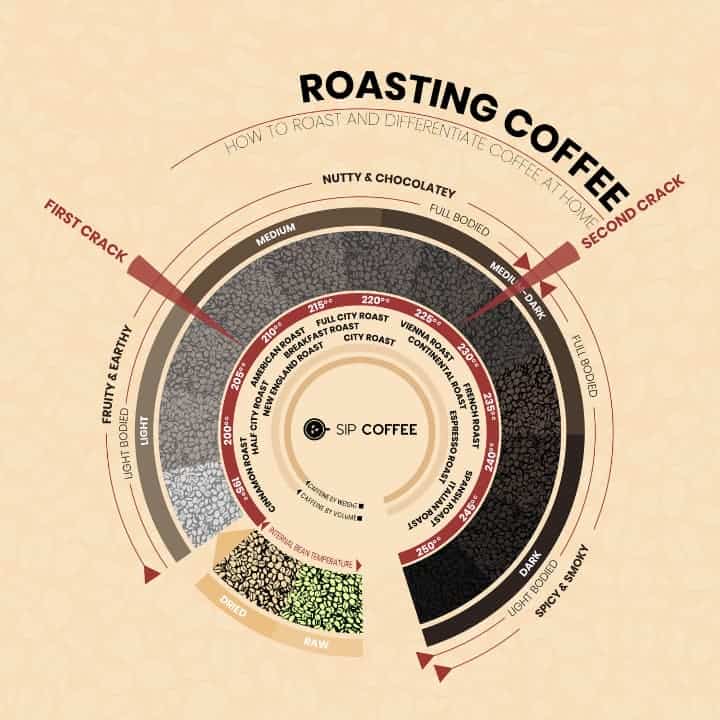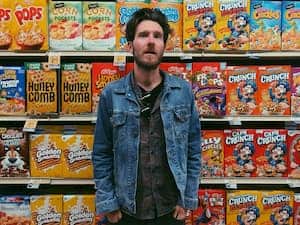What The Heck’s Blonde Roast Coffee?
Every now and then, trendy new buzz words for existing things will pop up and circulate the world of coffee.
It’s almost always the usual suspects, attempting (often very successfully) to create a trend out of something that has been popular elsewhere for decades. It happened when Starbucks decided to name their caramel latte a macchiato. And, surprise, surprise, that’s not the only time!
The term we are talking about today is blonde roast coffee.
What Is Blonde Roast Coffee?
Coined by the coffee monolith Starbucks, or more specifically their marketing team, we find the term ‘blonde roast coffee’. I say the term was dreamt up by their marketing team, mainly because you’ll never catch a roaster saying “oh yeah, that’s a blonde roast”.
A term like ‘blonde roast’ isn’t useful for a roaster— there is no blonde roast on the roast chart. Do the beans come out of the roasting machine blonde in color? No. Do they come out covered in little blonde hair? Also, thankfully, no.
So what is a Starbucks blonde roast coffee? Blonde roast is what they call their light roasts. In other words, the beans that they roast for the least amount of time or to the lowest end temperature. This, we call the roast degree.
In theory, a ‘blonde roast coffee’ should have very little ‘roasty’ flavor. With the absence of these generic roast flavors that are common in dark roasts, the coffee’s inherent characteristics can shine through in light roasts.
The huge berry flavors of a Kenyan coffee, the bright acidity of some Latin American coffees, or the floral and jasmine notes of a Panama Geisha would be lost if it wasn’t for ‘blonde roasts’ or light roasts.
That isn’t to say that all blonde roast coffee tastes like flowers and strawberry fields forever. No, the beans need to have these flavors already. The roast can only bring out these flavors— not create them. So if the green coffee isn’t good, no blonde roast can make it tasty.

What is blonde espresso?
There are a couple of things’ blonde’ espresso, or blonde coffee, might mean.
If you are in Starbucks, a blonde espresso is an espresso made with their blonde roast coffee.
When the term ‘cinnamon roast’ didn’t take off, most likely thanks to the flavor association, blonde roast, and blonde espresso took its place.
Outside of Starbucks, a blonding espresso has always been a bad thing.
As the barista carefully watches their shot flowing, the color would slowly fade from deep gold to a blonde color. At this point, the barista would hastily end the shot.
The idea was that when the shot began blonding, the ground coffee had nothing left to give. All the good stuff had already been extracted.
Related Read: Is Blonde Espresso Strong?
Is Blonde roast coffee the same as light roast?
Short answer: Yes. A light roast and a blonde roast are the same thing.
To understand a little better what a light roast and blonde roast coffees are, we need to understand how coffee goes from a neat little green seed to the brown bean we all know and adore.
The roasting process goes something like this.
Green coffee goes into a roasting machine. The roasting machine is hot, like a big old tumble drier, usually starting with a temperature of around 200°C. The beans go into the machine and are tumbled around the inner drum until the coffee roaster decides to release them, after which they fall into a cooling bin.
Within almost all roasting machines, there is a thermocouple. A thin rod-shaped thermometer. This thermocouple is attached to the roasting machine in such a way as to be in contact with the coffee beans inside the roasting machine. Using a thermocouple is one of the ways that a coffee roaster can control the roast degree of their coffee.
The amount of time the coffee spends in the roasting machine, along with the end temperature of the bean, is what will decide the roast degree.
What Happens in The Roaster?
All roasts can be mapped out with ‘milestones’. Each milestone throughout the roasting process marks a point in the bean’s journey to becoming roasted coffee.
Our first milestone is the turning point. This is the point when the coffee beans, or the thermocouple taking the temperature reading, begins rising in temperature. The turning point is usually 1-2 minutes in and is a result of charging room temperature beans into a hot roasting machine— it takes a while for the temperature to begin climbing.
The next really noticeable change is known as yellowing.
The green coffee beans start really drying out during the yellowing phase and take on a yellowish color. If you could call any coffee beans a ‘blonde roast’, visually, it would be beans at the yellowing phase. But brewing these would taste nothing like the blonde roast coffee we know— it would taste closer to hay and grass at this stage.
Next up is the browning phase, otherwise known as the Maillard phase.
Each bean is losing a lot of its moisture and is also beginning to turn brown.
The Maillard reaction causes this browning. Much of the way a coffee will end up tasting is developed during the browning phase of a roast thanks to sugar and acids in the coffee.
Around 10 minutes into the roast, toward the end of the browning phase, the pressure within the coffee beans has built to breaking point. With an audible ‘pop’ or cracking sound, we arrive at the first crack.
First crack is an event in which the coffee bean actually fractures, rapidly releasing most of the beans’ leftover free moisture. The following phase of the roast is often known as the development phase.
The name development phase is a little misleading— the beans don’t suddenly start to develop from this point onward. However, the first crack makes it much easier for the heat to penetrate and roast the inside of the beans.
When you see the words: development or developed mentioned in relation to roasting, it essentially means ‘cooked through’. How well are the beans’ cooked’ all the way through? A fully developed coffee will have been roasted so that the entire bean is roasted— not just the outside. Achieving a blonde roast that is fully developed is a difficult thing to do.
All good coffee generally ends somewhere in the development phase. The longer the coffee spends in the development phase, the darker it will be roasted.
If we continue roasting, the coffee beans’ oils will begin working their way to the outside of the beans in an event known as second crack. While the second crack still presents a cracking or popping sound, it is softer than the first crack.
The beans will now be visually oily and very dark in color. If we continue to roast, the beans will eventually carbonize and basically turn into little lumps of coal— they might even start a fire in the roasting machine!
Roast Degrees
Outside of Starbucks land, there are mainly four roast degrees or roast levels— light, medium, medium-dark, and dark. But of course, there are many shades in between. What one roaster calls a blonde roast might be what another considers medium. But basically, all roasts can be put into one of these categories.

Light Roast AKA Blond Roasts
Often known as Nordic style roasts, light roast beans are released from the roasting machine up to two minutes after the first crack. There are many different roast degrees in the light roast category.
Many roasters drop their coffee just as the first crack is finishing, and some even release the coffee during the first crack. Blonde roast coffee will usually have an end temperature of around 205°C.
There are a bunch of terms used, mostly in North America, to describe different levels of light roasts. Blonde roast coffee, light city roast, Cinnamon roast, half city roast, and New England roast are all terms used to describe light roast beans that end shortly after the first crack.
When Done Well
A sweet cup of coffee! Floral, with super bright acidity. Any of the fruity flavors within the coffee will be front and center with a well done light roast. This, to me, is the best way of showcasing a coffees authentic flavors. Absolutely no ‘roasty’ flavor notes will be present.
If you enjoy drinking coffees with multiple clear flavor components, try a half city or blonde roast.
When Done Poorly
Blonde roasts poorly done can be hollow, lacking sweetness and flavor. Overly acidic with notes of hay and grass. Poorly done light roasts, especially coffee that some might call ‘cinnamon roasts’ are just lacking something.
Medium Roast
Medium roasts are most common in Australian specialty coffee, but are also preferred in many specialty cafes across the world.
Here, we find city roast and breakfast roast— both terms used to describe medium roasts. Most specialty espresso roasts are also a medium roast. Medium roasted coffees usually exit the roasting machine with a temperature of around 210°C.
When Done Well
First and foremost, a medium roast coffee has maximum sweetness—a fairly heavy body with deep fruit notes. If a blonde roast tastes like biting into a fresh peach or a crisp apple, then a medium roast is like eating stewed plums. Rich and syrupy!
When Done Poorly
A poorly done medium coffee will most likely taste roasty. When done badly, it will taste roasty and under-developed— both charcoal and hay-like.
Medium Dark Roast
Also known as full city roasts, medium-dark roasts are getting quite dark in color and will have some oil creeping to the surface of the bean. They are often used as espresso roast beans with an ending temperature of around 220°C.
When Done Well
In the right hands, a medium-dark coffee can be very sweet and have a velvety body. If we’re lucky, we might get some stewed fruit notes, but will most likely taste a lot of caramel flavors.
There will probably be some roastiness, but it might not be the most unpleasant of things if done well.
Medium-dark roast beans can go well with milk, as part of a flat white or other milk coffees.
When Done Poorly
At this stage, the chance of under-development is low. We’re looking mostly at burned flavors. Toasty, ashy, thin, and without much sweetness.
Dark Roast
Dark roasts were the norm for quite some time. They are often referred to as Italian roast, French roast, dinner roast, and New Orleans roast— but the list goes on and on!
Dark roasted coffee is roasted beyond the second crack, with a finishing temperature of 225°C+. Once coffee is roasted past the second crack, we are left with black coffee beans. They have begun carbonizing, and as such, taste like ash.
When Done Well
Even when done well, there is no saving a dark roast. None of the coffee’s inherent characteristics are intact at this point.
The most we can hope for is a coffee that isn’t too ashy, with a little sweetness and a velvety body. Either way, there will be very little acidity, if any acidity at all.
When Done Poorly
An average dark roast will just taste burnt. Ashy, toasty, and bitter. For me, the only chance I have of evenly slightly enjoying a dark roast, even from the best roasters, is if I use it for a batch of cold brew.
It should be noted that many people absolutely love darker roasts. Fans of darker roasts often think blonde roasts are far too lightly roasted and are too acidic. Not fans of the half city, light city, blonde roast approach, they love the bitterness and how heavy these dark roasts are.
Is Blonde Roast Coffee stronger?
It depends on how you measure the amount of beans that you use!
Let’s say raw, unroasted green beans have 2 milligrams of caffeine each. This, of course, isn’t exact— but for argument sake, let’s just call it 2mg.
During the roasting process, this bean will lose most of its water content but none of its caffeine content. That means it will come out of the roaster lighter in weight than it went in, but with the same amount of caffeine.
So if we weigh out 30 grams of beans on a scale, a medium or dark roast will have more caffeine. This is because there will be more individual coffee beans in those 30 grams than there would be for a blonde roast.
If we measure using a volume-based measurement, like tablespoons or cups, the opposite will happen. The lighter the roast, the more caffeine we’ll get.
Because light and blonde roasts have lost less of their water content, are physically smaller, and are denser than a darker coffee, one tablespoon will contain more individual blonde roast beans. And therefore, more caffeine.
Taste Profile
The flavor potential of a coffee is decided well before a coffee roaster even touches it.
If you’ve ever enjoyed drinking coffee that tastes super fruity, or floral, or with some incredible acidity and sweetness— none of those flavors are there because of the roast. In fact, what the roaster has craftily done in this scenario, is stand out of the way. They have applied the correct amount of heat to the coffee in order to bring out these insanely delicious flavors. They didn’t put those flavors in there.
Coffee roasters who choose a blonde roast will often spend more money buying higher quality lots of coffee. For these roasters, the idea of roasting this beautiful coffee any darker than a blonde roast would be sacrilege.
That is because light or blonde roast coffee preserves the natural flavor of the coffee. What kind of flavors can we expect?
Vibrant acidity, sweet, fruity, and floral.
Acidity
Light or blonde roast coffee owns acidity!
Depending on the coffee, we see a whole range of bright, sparkling acidity notes that might remind you of a number of different fruits in a cup of coffee. For example, some light roasted Ethiopian coffees have a lemon-like acidity. And Costa Rican coffee is well known for it’s crisp, green apple-like acidity.
A coffee roaster can bring out the acidity of a coffee during a roast by roasting the coffee light and charging the beans into the roaster at a high initial temperature.
As we progress through a roast, past first crack and into medium-dark territory, acidity pretty quickly diminishes.
If a blonde roast coffee is too light, the acidity can come across as straight-up sour.
Is a Blonde Roast Healthier?
Coffee is being studied all the time.
There are countless studies investigating the possibility that coffee is, in fact, a literal magic bean. A couple of the good things that the studies look at in coffee are chlorogenic acid and antioxidant content.
A study published by the Journal of Medicinal Food, titled ‘Cellular antioxidant and anti-inflammatory effects of coffee extracts with different roasting levels‘, found that blonde roast beans are healthier than darker roasts.
The study found that light roasted coffee contains the highest total chlorogenic acid content, as well as the highest antioxidant properties.
Chlorogenic acid has been found to have anti-inflammatory effects and lowers blood glucose concentrations.
Summary
Whatever you choose to call it— blonde roast, cinnamon roast, half city, or simply light— light roasts are a treat when done well.
They really show what a particular coffee is made of. With a blonde roast, there is nowhere to hide! You can even taste the changes within a coffee from one harvest to the next.
I don’t know about you, but to me, that is oh so exciting!

